Exploring Filipino street dance culture unveils a dynamic journey from Budots to contemporary moves. Originating in Davao City around 2006, Budots emerged as a street dance phenomenon, embodying local identity and cultural pride. Characterized by worm-like motions and heavy percussion, Budots fuses indigenous sounds with electronic beats, primarily using Bisayan languages in lyrics. This genre has evolved, influencing cultural and political expression, and was notably used in political campaigns, enhancing populist images. Budots' viral presence on platforms like TikTok has brought Filipino culture to global attention, fostering international recognition and inspiring new artists and remix cultures. Understanding this evolution reveals the rich, ever-changing landscape of Filipino street dance.
Budots Etymology
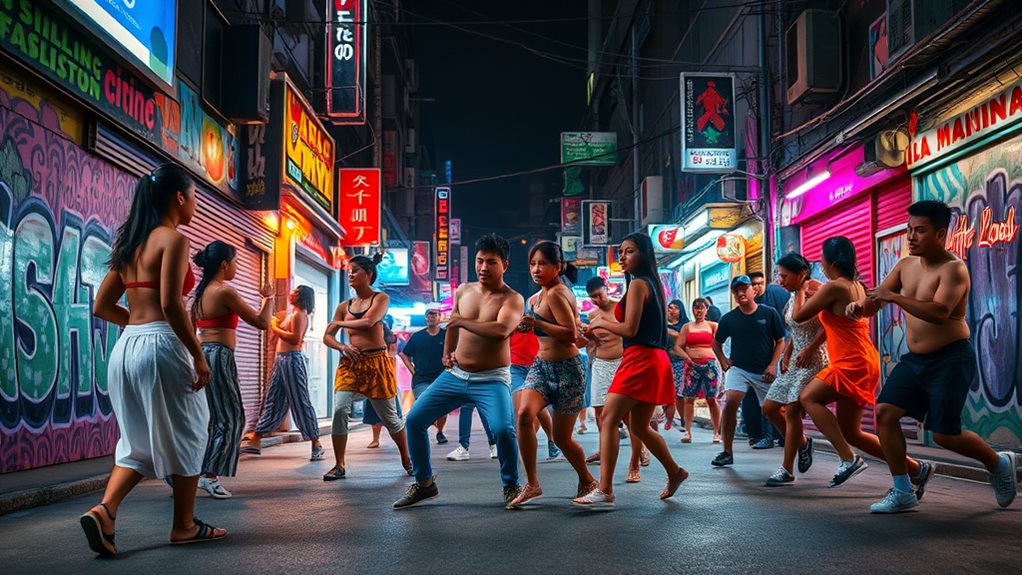
The term "Budots" emerges from the linguistic tapestry of Bisaya slang in Davao City, Philippines, signifying "slacker" and thus encapsulating the informal and spontaneous origins of this street dance culture.
Initially perceived as a slang word for slacker, Budots reflects the characteristics of glue-sniffing youth known as rugby boys, who popularized the dance. An alternative etymology traces Budots to "tabudots," emphasizing the dance's unpredictable and playful movements.
DJ Love, also known as Sherwin Calumpang Tuna, formalized Budots as a dance craze by mixing local sounds in 2009. This integration of regional music into the dance solidified Budots' place in Filipino culture, demonstrating its evolution from informal slacker behaviors to a recognized and celebrated form of urban expression in Davao City.
Academic research from UP Mindanao underscores the linguistic roots and cultural significance of Budots, illustrating its profound impact on Filipino street dance culture.
Origins of Budots
A street dance phenomenon emerges in Davao City around 2006, originating from the local slang term "Budots," which means "slacker."
Budots gains traction as DJ Love, also known as Sherwin Calumpang Tuna, blends indigenous sounds with electronic music, fostering a unique dance style among Davaoeño youth.
Initially, Budots was associated with glue-sniffing youth known as "rugby boys," but as Sherwin Tuna continued to produce music that amalgamated traditional Filipino sounds with contemporary electronic beats, Budots transformed into a cultural phenomenon reflecting Davaoeño pride and self-identity.
Through his work, Sherwin Tuna encouraged the youth to develop their own dance moves, creating a fusion that spoke to their distinct experiences and background in the vibrant urban landscape of Davao City.
Budots Characteristics
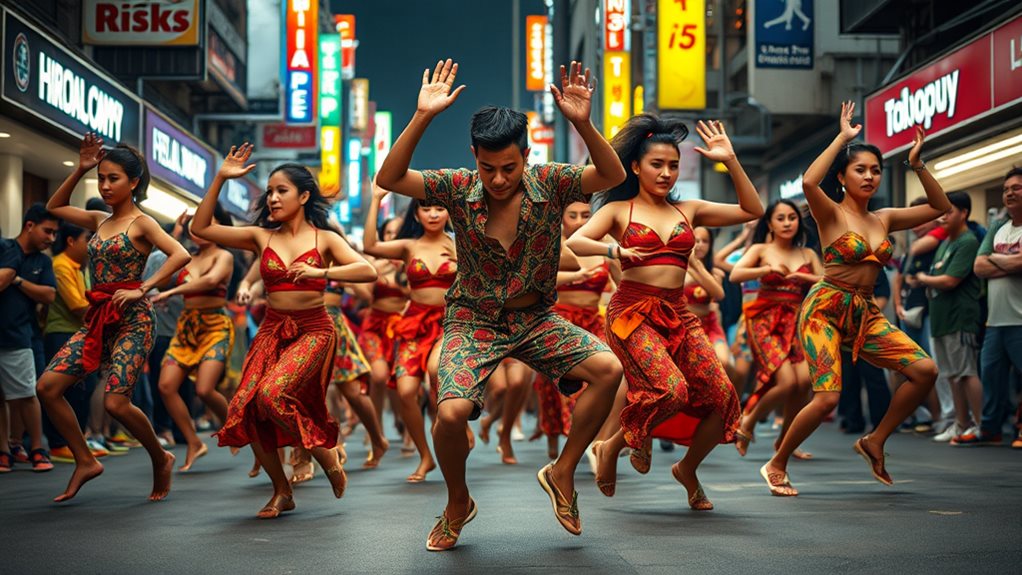
Eleven years after its emergence in Davao City, Budots music maintains a tempo of 140 BPM, marked by four-on-the-floor patterns and off-beat basslines, which support its energetic and dynamic dance styles.
When engaging with Budots music, you find that dance moves are characterized by worm-like, ragdoll motions, with an emphasis on hip wriggling and squatting. These movements embody the informal and playful nature of the genre, resonating deeply with Filipino street culture.
Budots songs incorporate catchy whistle hooks and heavy percussion, blending traditional Filipino dance elements into contemporary rhythms. The off-beat basslines add to the unique auditory landscape, encouraging freestyle dancing that mirrors the spontaneity and creativity of the community.
Lyrics, primarily in Bisayan languages, often act as vocal samples, grounding the music in local cultural influences while providing an engaging auditory experience.
As a form of community expression, Budots contributes significantly to the shaping of Filipino contemporary culture in Davao City, reflecting the city's vibrant, localized street dance and music scene.
Budots Music Genres
Crafting an electronic dance music soundscape that fuses kick-snare patterns and off-beat basslines, Budots subgenre dynamic beats resonate at 140 BPM, integrating techno and house influences with piercing whistle hooks and heavy percussion to catalyze freestyle dancing.
This unique blend defines budots music, a genre deeply rooted in the creative energy of Davaoeño youth. By incorporating Bisayan languages in lyrics, artists enhance cultural expression while maintaining the high-energy rhythm characteristic of the subgenre.
Budots music's immersive soundscape draws from a rich tapestry of cultural sounds, reflecting the vibrant and innovative dance culture of Southeast Asia. Related genres such as Tagonggo, Funkot, and Vinahouse contribute to the diverse array of Southeast Asian electronic dance music, further emphasizing the genre's cultural contextualization and its relevance to contemporary urban moves.
Cultural Impact
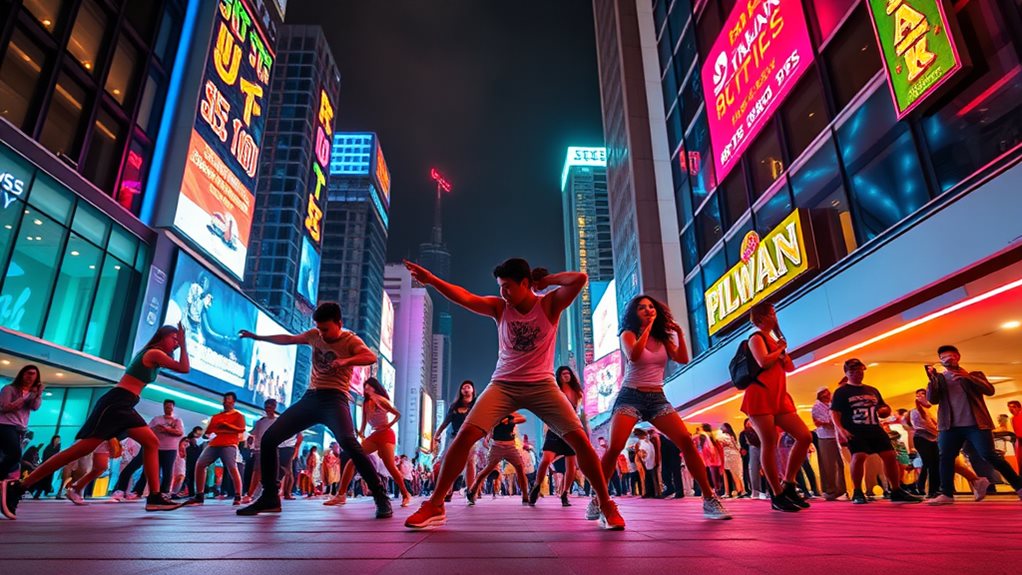
Budots, with its distinctive 140 BPM beats and cultural lyrics, has evolved not only as a musical subgenre but also as a significant aspect of contemporary Filipino culture.
Its viral presence on TikTok has garnered millions of views, exposing Filipino culture to a global audience and igniting curiosity about its unique dance moves.
Beyond social media, Budots has made inroads into mainstream culture through advertisements and media coverage, such as featuring in the Lucky Me! Pancit Canton campaign, thereby elevating its status from regional phenomenon to national and international recognition.
This genre serves as a powerful tool for cultural expression, fostering a sense of community and identity among urban dancers.
Amidst contemporary challenges, Budots provides a platform for social engagement, encouraging youth to connect with their cultural roots while expressing themselves through music and dance.
Political Influence
A notable political figure, former Mayor Rodrigo Duterte, incorporated a distinctive musical genre into his 2016 presidential campaign, enhancing his populist image in Visayan culture through a series of videos dancing to Budots.
By deploying these videos on social media, Duterte tapped into a vibrant, underrepresented scene, using Budots as a bridge to connect with younger, more technologically inclined voters.
This strategic use of music genre demonstrated the potent political influence that street dance culture could wield.
DJ Love, the creator of Budots, however, expressed concerns over unauthorized usage of his music, highlighting the nebulous line between cultural expression and political co-optation.
Senator Bong Revilla also capitalized on Budots for his political advertisements, further embedding the genre into the national political discourse.
These instances underscored how Budots transcended its origins to serve both entertainment and political messaging, often overshadowing complex policy discussions.
Through such engagements, street dance culture, particularly Budots, became an integral part of the political landscape, reflecting changing dynamics between popular culture and governance in the Philippines.
Budots Reception
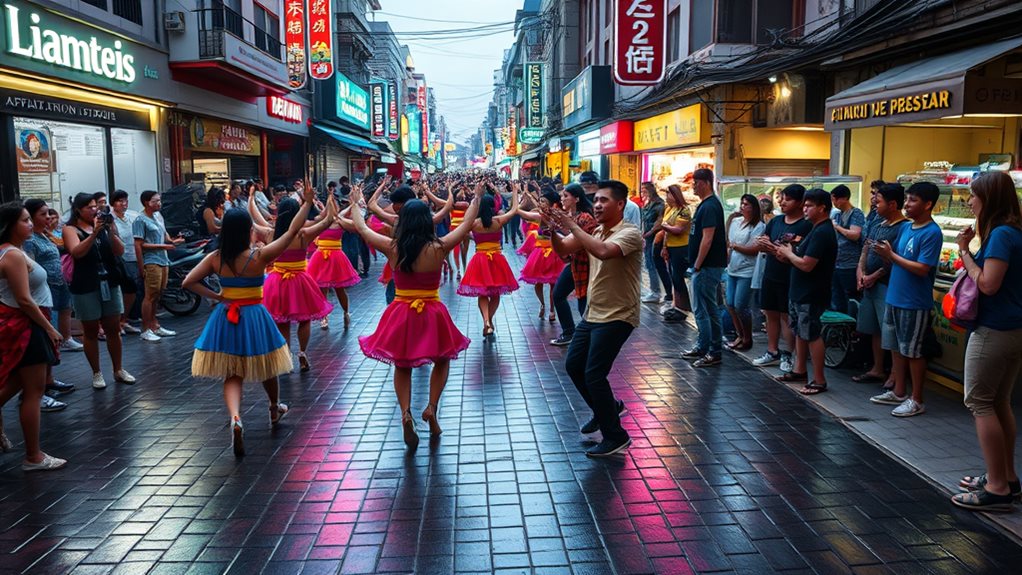
While music journalists often criticized Budots for its repetitive nature, they also acknowledged its role as a cultural reinterpretation of Western music genres by Davao locals, which has allowed the genre to not only survive but also evolve in the contemporary Filipino street dance scene.
DJ Love's mix videos, particularly those supporting Duterte's policies, showcased Budots intertwined with political narratives, reinforcing its significance.
In 2024, TikTok trends propelled Budots back into the spotlight with DJ Johnrey Masbate's "Emergency Budots," a remix that garnered millions of views across over 500,000 TikTok videos.
Political figures like Sen. Bong Revilla utilized Budots in campaign ads, demonstrating its cultural reach and impact.
These budots mixes not only attracted voter attention but also highlighted the genre's evolving place within broader Filipino street dance culture.
Media Presence
Featuring in the 2019 documentary "Budots: The Craze," exploring its origins and cultural significance in Davao City, you gain significant media attention. This exposure not only highlights the unique beats of Davao but also underscores the broader trajectory of Filipino music influencing global street dance trends.
Following this, Budots dance videos start to proliferate on social media platforms, with brands like Lucky Me! Pancit Canton incorporating them into advertising campaigns to tap into a younger demographic. Political figures, including Senator Bong Revilla, leverage the dance form in their electoral strategies, amplifying its cultural relevance and widespread appeal.
Particularly noteworthy is DJ Johnrey Masbate's "Emergency Budots" challenge, which leads to over 500,000 performances and videos, driving Budots into the mainstream and elevating its profile. Major international news outlets, such as The Guardian, report on the phenomenon, attributing Budots' surge in popularity to its dynamic cultural significance and its ability to redefine global perceptions of Filipino music within urban dance movements.
Through these various media channels, Budots solidify its place not just in Davao City, but within a global discourse on street dance and cultural expression.
Notable Events
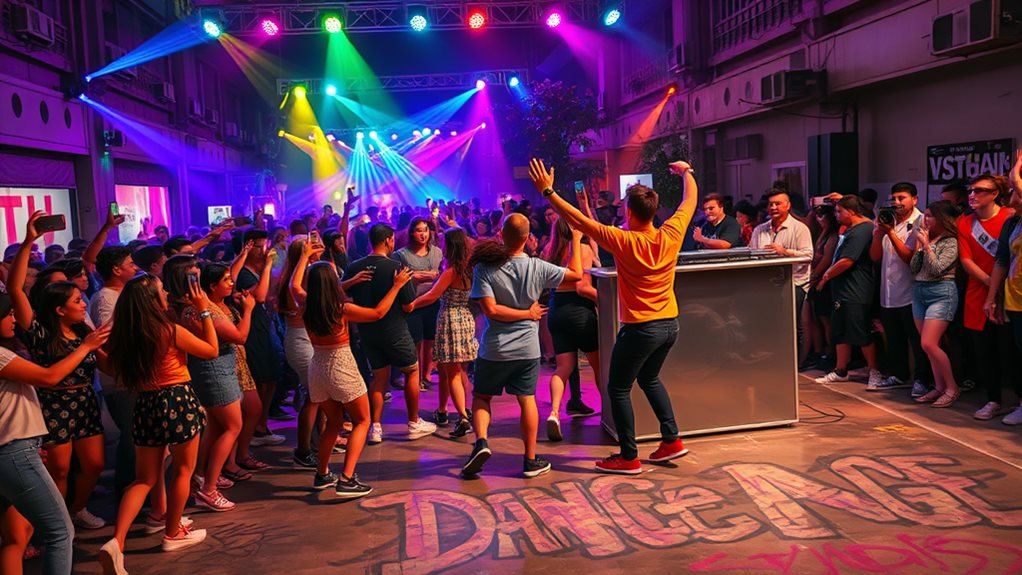
Dancing through cultural anniversaries and festive gatherings, Budots continues to assert its presence and significance, garnering attention at events like the Manila Community Radio's spotlight in 2023, where it showcased both its cultural importance and community engagement.
Such exhibitions underscore Budots' role in local traditions, emphasizing its deep roots in Filipino street dance culture. Furthermore, Budots has become a prominent feature in various local Christmas parties and celebrations, reinforcing its impact on festive gatherings in the Philippines.
The genre's integration into broader dance scenes has been evident in your participation in competitions such as the World Of Dance Philippines, where DSquared Cru represented Budots, highlighting its growth and versatility.
Notably, the popularity of Budots in social events is enhanced by the inclusion of DJ Love's mixes, which seamlessly blend with the dance moves, creating dynamic atmospheres in clubs and parties.
Additionally, political figures, including Bong Revilla, have engaged with Budots culture, employing it during campaigns and public appearances to connect with constituents, thereby elevating its social and cultural significance within communities.
Through these events, Budots establishes itself as a vibrant and influential element of Filipino street dance, bridging traditional and contemporary expressions.
Future Trends
In the evolution of Budots, new artists emerge and remix culture diversifies its sound, reflecting contemporary trends in electronic dance music, pushing the genre beyond traditional boundaries and into innovative territories.
DJ Love's introduction of bomb-tek in "Budots World (Reloaded)" exemplifies this innovation, blending Budots with bombastic foreign electronic dance music.
The 2023 Manila Community Radio grant underscores institutional support for Budots, recognizing its cultural significance.
Meanwhile, viral trends on TikTok, like the "Emergency Budots," have globalized the genre, drawing millions to its dance moves and outfits.
These factors set the stage for international recognition, potentially placing Budots alongside other Filipino cultural icons.
- Budots fusion with bomb-tek marks a significant boundary push.
- Manila Community Radio grant highlights Budots' growing cultural value.
- TikTok's "Emergency Budots" trend showcases global visibility.
- Potential international recognition looms, likening Budots to traditional dances.
Budots Evolution
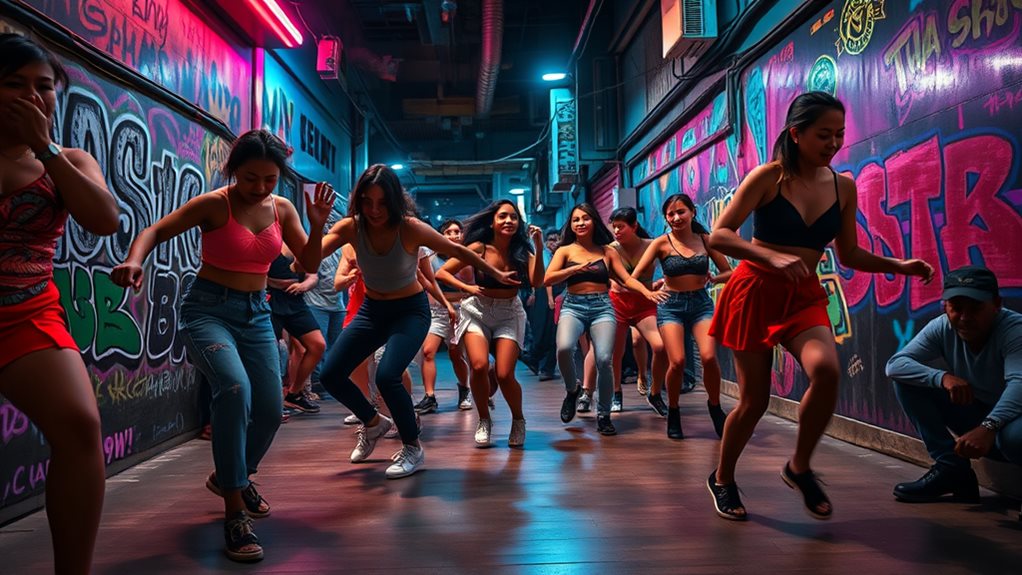
Budots, a genre that emerged in Davao City around 2006, transformed from a local dance style linked to glue-sniffing youths into a mainstream electronic dance phenomenon, largely due to DJ Love's pioneering efforts.
Initially characterized by its unique sound featuring tiw-tiw whistles, heavy bass, and infectious rhythms, Budots encouraged freestyle dancing. Over time, the genre gained viral popularity, with tracks like "Emergency Budots" being sampled and used in over 500,000 TikTok videos by mid-2024.
These sounds reflected the Davaoeño culture and spirit. Budots dance moves have evolved to incorporate a variety of influences from other Filipino cultural dances, merging traditional and contemporary styles.
The resurgence of the genre has seen the participation of local artists and DJs, leading to new sounds such as "bomb-tek," which push the boundaries of Budots while honoring its cultural roots.
Through DJ Love's innovative contributions and the integration of cultural elements, Budots continues to evolve as a significant part of Filipino street dance culture.
International Recognition
Could the turning point in international recognition for Budots have been DJ Love's performance at the Margins United Festival in the UK, where diverse East and Southeast Asian artists were showcased? This event marked a significant moment, signaling the genre's potential to transcend national boundaries.
- DJ Love's Margins United performance exposed Budots to a global audience, fostering initial interest.
- Viral remixes like "Emergency Budots" by DJ Johnrey Masbate, with millions of views on TikTok, amplified this interest.
- Media coverage in The Guardian highlighted Budots' cultural significance, driving broader recognition.
- The genre's acceptance during political campaigns, especially during the Duterte administration's "Duterte dancing," solidified its status as a cultural phenomenon.
The Manila Community Radio's initiative to spotlight Budots through grants further underscores the growing international demand for cultural engagement and exchange.
These collaborative efforts not only promote Budots but also integrate it into wider cultural narratives, enhancing its global appeal and understanding.
Questions and Answers
What Is the Culture of the Budots Dance?
Exploring the culture of Budots dance involves understanding its dance expressions, community gatherings, and social dynamics, heavily influenced by cultural traditions and street performance styles, with music genres like electronic house, fostering youth engagement.
What Is Budots in the Philippines?
Budots in the Philippines represents a vibrant music, fashion, and dance scene, with Budots challenges, community events, and influential DJs driving its evolution and cultural impact.
Where Do Emergency Budots Come From?
Emergency Budots emerge from Budots history, evolving Dance evolution with Urban influences, gaining Social impact, reflecting Music genres mix, embodying Cultural significance in dynamic Performance styles.
What Is the Origin of the Word Budots?
Recognizing Budots Evolution, tracing its origins ties to socio-cultural factors, blending Dance Influence, Music Genres, regional practices, highlighting Cultural Significance, Social Gatherings, Dance Competitions, grounded in youth subculture commentary.